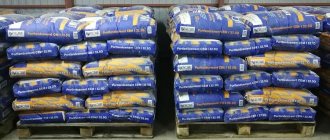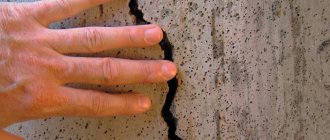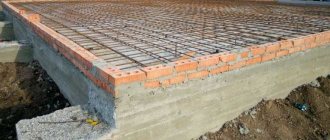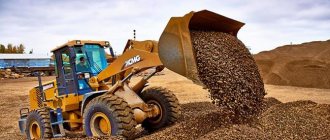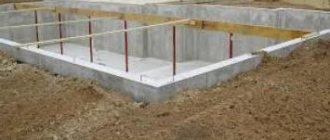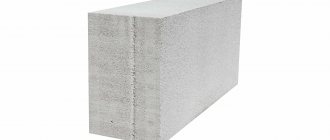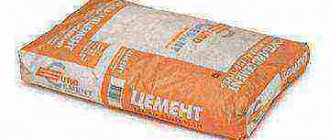GOST 8267-93
INTERSTATE STANDARD
CRUSHED STONE AND GRAVEL FROM DENSE ROCKS FOR CONSTRUCTION WORKS
Specifications
INTERSTATE SCIENTIFIC AND TECHNICAL COMMISSION FOR STANDARDIZATION AND TECHNICAL REGULATION IN CONSTRUCTION Minsk
Preface
1 DEVELOPED by the VNIPIIstromsyryo Institute with the participation of VNIIzhelezobeton, NIIZhB, Soyuzdornia of the Russian Federation
INTRODUCED by the State Construction Committee of Russia
2 ADOPTED by the Interstate Scientific and Technical Commission for Standardization and Technical Regulation in Construction (INTKS) on November 10, 1993.
The following voted for adoption:
| State name | Name of the state construction management body |
| The Republic of Azerbaijan | State Construction Committee of the Azerbaijan Republic |
| Republic of Armenia | State Architecture of the Republic of Armenia |
| Republic of Belarus | Gosstroy of the Republic of Belarus |
| The Republic of Kazakhstan | Ministry of Construction of the Republic of Kazakhstan |
| Republic of Kyrgyzstan | Gosstroy of the Kyrgyz Republic |
| The Republic of Moldova | Ministry of Architecture and Construction of the Republic of Moldova |
| Russian Federation | Gosstroy of Russia |
| The Republic of Tajikistan | State Construction Committee of the Republic of Tajikistan |
| The Republic of Uzbekistan | State Committee for Architecture and Construction of the Republic of Uzbekistan |
Change No. 1 was adopted by the Interstate Scientific and Technical Commission for Standardization, Technical Regulation and Certification in Construction (MNTKS) on December 10, 1997.
The following voted to approve the change:
| State name | Name of the state construction management body |
| The Republic of Azerbaijan | State Construction Committee of the Azerbaijan Republic |
| Republic of Armenia | Ministry of Urban Development of the Republic of Armenia |
| The Republic of Kazakhstan | Agency for Construction and Architectural and Urban Planning Control of the Ministry of Economy and Trade of the Republic of Kazakhstan |
| Republic of Kyrgyzstan | Ministry of Architecture and Construction of the Kyrgyz Republic |
| Russian Federation | Gosstroy of Russia |
| The Republic of Tajikistan | State Construction Committee of the Republic of Tajikistan |
Change No. 2 was adopted by the Interstate Scientific and Technical Commission for Standardization, Technical Regulation and Certification in Construction (MNTKS) 05/17/2000
Change No. 3 was adopted by the Interstate Scientific and Technical Commission for Standardization, Technical Regulation and Certification in Construction (MNTKS) on April 24, 2002
The following voted for the adoption of changes No. 2 and 3:
| State name | Name of the state construction management body |
| The Republic of Azerbaijan | State Construction Committee of the Azerbaijan Republic |
| Republic of Armenia | Ministry of Urban Development of the Republic of Armenia |
| Republic of Belarus | Ministry of Construction and Architecture of the Republic of Belarus |
| The Republic of Kazakhstan | Kazconstruction Committee of the Republic of Kazakhstan |
| Republic of Kyrgyzstan | State Commission for Architecture and Construction under the Government of the Kyrgyz Republic Ministry of Ecology, Construction and Territorial Development |
| The Republic of Moldova | Republic of Moldova |
| Russian Federation | Gosstroy of Russia |
| The Republic of Tajikistan | Komarchstroy of the Republic of Tajikistan |
| The Republic of Uzbekistan | State Committee for Architecture and Construction of the Republic of Uzbekistan |
3 ENTERED INTO EFFECT on January 1, 1995 as a state standard of the Russian Federation by Decree of the State Construction Committee of Russia dated June 17, 1994 No. 18-43
4 INSTEAD GOST 8267-82, GOST 8268-82, GOST 10260-82, GOST 23254-78, GOST 26873-86
5 EDITION (December 2003) with Amendments No. 1, 2, 3, adopted in February 1998, January 2000, June 2002, (IUS 5-98, 5-2001, 10-2002)
INTERSTATE STANDARD
| CRUSHED STONE AND GRAVEL FROM DENSE ROCKS FOR CONSTRUCTION WORKS Specifications Crushed stone and gravel of solid rocks for construction works. Specifications |
Date of introduction 1995-01-01
4 Technical requirements
4.1 Crushed stone and gravel must be manufactured in accordance with the requirements of this standard according to technological documentation approved by the manufacturer.
4.2. Main parameters and dimensions
4.2.1 Crushed stone and gravel are produced in the form of the following main fractions: from 5(3) to 10 mm; St. 10 to 15 mm; St. 10 to 20 mm; St. 15 to 20 mm; St. 20 to 40 mm; St. 40 to 80(70) mm and mixtures of fractions from 5(3) to 20 mm. By agreement between the manufacturer and the consumer, crushed stone and gravel are produced in the form of other mixtures composed of individual fractions, as well as fractions from 80 (70) to 120 mm, St. 120 to 150 mm.
4.2.2 Complete residues on control sieves when sifting crushed stone and gravel of fractions from 5(3) to 10 mm, St. 10 to 15 mm, St. 10 to 20 mm, St. 15 to 20 mm, St. 20 to 40 mm, St. 40 to 80(70) mm and mixtures of fractions from 5(3) to 20 mm must correspond to those indicated in Table 1, where and are the smallest and largest nominal grain sizes. Table 1
| Diameter of test sieves holes, mm | 0,5( ) | 1,25 | ||
| Total residues on sieves, % by weight | From 90 to 100 | From 30 to 60 | To 10 | Up to 0.5 |
| Notes 1 For crushed stone and gravel of fractions from 5(3) to 10 mm and a mixture of fractions from 5(3) to 20 mm, additionally use: lower sieves 2.5 mm (1.25 mm), the total residue on which should be from 95 % to 100%. 2 By agreement between the manufacturer and the consumer, it is allowed to produce crushed stone and gravel with a total residue on a 0.5 () sieve from 30% to 80% by weight. | ||||
4.2.3 For crushed stone and gravel fractions St. 80(70) to 120 mm and St. 120 to 150 mm, as well as for a mixture of fractions produced by agreement between the manufacturer and the consumer, the total residues on the control sieves with a diameter must satisfy those indicated in Table 1, and the ratio of fractions in the mixtures is established by agreement between the manufacturer and the consumer in accordance with regulatory documents for the use of these mixtures for construction work.
4.2.1-4.2.3 (Changed edition, Amendment No. 3).
4.2.4 (Deleted, Amendment No. 3).
4.3 Content of crushed grains in crushed gravel and boulders and grain shape
(Changed edition, Amendment No. 4).
4.3.1 Crushed stone from gravel and boulders must contain crushed grains in an amount of at least 80% by weight. It is allowed, by agreement between the manufacturer and the consumer, to produce crushed stone from gravel containing at least 60% crushed grains. (Changed edition, Amendment No. 4).
4.3.2 The shape of crushed stone and gravel grains is characterized by the content of lamellar (flaky) and needle-shaped grains. Crushed stone, depending on the content of lamellar and needle-shaped grains, is divided into five groups, which must correspond to those indicated in Table 2.
table 2
| Crushed stone group | Content of lamellar (flaky) and needle-shaped grains, % by weight | |
| 1 | 10 incl. | |
| 2 | St. 10 to 15 incl. | |
| 3 | » 15 » 25 » | |
| 4 | Over 25 to 35 inclusive. | |
| 5 | » 35 » 50 » | |
| Note - By agreement between the manufacturer and the consumer, it is allowed to produce crushed stone from igneous rocks containing St. 50%, but not more than 65% of grains are lamellar (flaky) and needle-shaped. | ||
(Changed edition, Amendment No. 3).
4.3.3 Gravel should not contain lamellar and needle-shaped grains of more than 35% by weight.
4.4 Durability
4.4.1 The strength of crushed stone and gravel is characterized by the grade according to its crushability when compressed (crushed) in a cylinder. Crushed stone and gravel intended for the construction of highways are characterized by a grade based on crushability when compressed (crushed) in a cylinder and a grade based on abrasion, determined by testing in a shelf drum.
4.4.2 Grades for crushability of crushed stone from sedimentary and metamorphic rocks must comply with the requirements specified in Table 3, and grades for crushability of crushed stone from igneous rocks - in Table 4. Table 3
| Grade for crushability of crushed stone from sedimentary and metamorphic rocks | Weight loss when testing crushed stone, % | |
| dry | saturated with water | |
| 1200 | Up to 11 incl. | Up to 11 incl. |
| 1000 | St. 11 to 13 | St. 11 to 13 |
| 800 | » 13 » 15 | » 13 » 15 |
| 600 | » 15 » 19 | » 15 » 20 |
| 400 | » 19 » 24 | » 20 » 28 |
| 300 | » 24 » 28 | » 28 » 38 |
| 200 | » 28 » 35 | » 38 » 54 |
Table 4
| Grade for crushability of crushed stone from igneous rocks | Weight loss when testing crushed stone, % | |||
| from intrusive rocks | from effusive rocks | |||
| 1400 | Up to 12 incl. | Up to 9 incl. | ||
| 1200 | St. 12 to 16 | St. 9 to 11 | ||
| 1000 | » 16 » 20 | » 11 » 13 | ||
| 800 | » 20 » 25 | » 13 » 15 | ||
| 600 | » 25 » 34 | » 15 » 20 | ||
It is allowed to determine the grade of crushed stone from sedimentary and metamorphic rocks both in a dry and in a water-saturated state. If the grades do not match in terms of crushability, the strength is assessed based on the test results in a water-saturated state. Grades for crushability of crushed stone and gravel must meet the requirements specified in Table 5. Table 5
| Grade for crushability of crushed stone and gravel | Weight loss during testing,% | |||
| crushed gravel | gravel | |||
| 1000 | Up to 10 incl. | Up to 8 incl. | ||
| 800 | St. 10 to 14 | St. 8 to 12 | ||
| 600 | » 14 » 18 | » 12 » 16 | ||
| 400 | » 18 » 26 | » 16 » 24 | ||
To establish the grade for crushability of crushed stone from boulders, consisting of rocks of different genetic types, an intermediate grade for crushability is determined according to GOST 8269.0 as a weighted average of the grades obtained separately for crushed stone of these types of rocks, taking into account their content in crushed stone from boulders. Based on the weighted average grade, the grade is determined according to the crushability of crushed stone from boulders according to Table 5a. Table 5a
| Intermediate weighted average grade for crushability of crushed stone from boulders | Grade for crushability of crushed stone from boulders |
| 1200 and above | 1200 |
| St. 1000 to 1200 | 1000 |
| St. 800 to 1000 | 800 |
| St. 600 to 800 | 600 |
| St. 400 to 600 | 400 |
| St. 300 to 400 | 300 |
4.4.1, 4.4.2 (Changed edition, Amendment No. 4).
4.4.3 Grades for abrasion of crushed stone and gravel must meet the requirements specified in Table 6. Table 6
| Grade for abrasion of crushed stone and gravel | Weight loss during testing,% | |||
| crushed stone | gravel | |||
| I1 | Up to 25 incl. | Up to 20 incl. | ||
| AND 2 | St. 25 to 35 | St. 20 to 30 | ||
| I3 | » 35 » 45 | » 30 » 40 | ||
| I4 | » 45 » 60 | » 40 » 40* | ||
______________ * The text of the document corresponds to the original. — Note from the database manufacturer.
4.5 Content of soft rock grains The content of soft rock grains in crushed stone and gravel, depending on the type of rock and crushability grade, should not be more than that indicated in Table 7. Table 7
| Type of rock and grade for crushability of crushed stone and gravel | Content of soft rock grains, % by weight | ||
| Crushed stone from igneous, metamorphic and sedimentary rocks grades: | |||
| 1400; 1200; 1000 | 5 | ||
| 800; 600; 400 | 10 | ||
| 15 | |||
| Crushed stone from gravel and boulders and gravel grades: | |||
| 1000; 800; 600 | 10 | ||
| 400 | 15 | ||
4.6 Frost resistance
4.6.1 Frost resistance of crushed stone and gravel is characterized by the number of freezing and thawing cycles, during which the percentage loss by weight of crushed stone and gravel does not exceed the established values. It is possible to evaluate the frost resistance of crushed stone and gravel by the number of cycles of saturation in a solution of sodium sulfate and drying. If the brands do not match, frost resistance is assessed based on the results of the freezing and thawing test.
4.6.2 Crushed stone and gravel are divided into the following grades based on frost resistance: F15, F25, F50, F100, F150, F200, F300, F400. The frost resistance indicators of crushed stone and gravel when tested by freezing and thawing or saturation in a solution of sodium sulfate and drying must correspond to those indicated in Table 8. Table 8
| Type of test | Frost resistance grade for crushed stone and gravel | |||||||||
| F15 | F25 | F50 | F100 | F150 | F200 | F300 | F400 | |||
| Freeze-thaw: | ||||||||||
| — number of cycles | 15 | 25 | 50 | 100 | 150 | 200 | 300 | 400 | ||
| — weight loss after testing, %, no more | 10 | 10 | 5 | 5 | 5 | 5 | 5 | 5 | ||
| Saturation in sodium sulfate solution - drying: | ||||||||||
| — number of cycles | 3 | 5 | 10 | 10 | 15 | 15 | 15 | 15 | ||
| — weight loss after testing, %, no more | 10 | 10 | 10 | 5 | 5 | 3 | 2 | 1 | ||
4.7 Content of dust and clay particles
4.7.1 The content of dust and clay particles (less than 0.05 mm in size) in crushed stone and gravel, depending on the type of rock and crushability grade, must correspond to that indicated in Table 9. Table 9
| Type of rock and grade for crushability of crushed stone and gravel | Content of dust and clay particles, % by weight, no more |
| Crushed stone from igneous and metamorphic rocks grades: | |
| St. 800 | 1 |
| St. 600 to 800 incl. | 1 |
| Crushed stone from sedimentary rocks grades: | |
| from 600 to 1200 incl. | 2 |
| 200, 400 | 3 |
| Crushed gravel and gravel grades: | |
| 1000 | 1 |
| 800 | 1 |
| 600 | 2 |
| 400 | 3 |
| Crushed stone from boulders brands: | |
| 1200 | 1 |
| 1000 | 1 |
| 800 | 1 |
| 600 | 2 |
| 400 | 3 |
(Changed edition, Amendment No. 4).
4.7.2 The clay content in lumps should not exceed that indicated in Table 10. Table 10
| Grade for crushability of crushed stone and gravel | Clay content in lumps, % by weight, no more |
| Crushed stone from igneous, sedimentary and metamorphic rocks grades: | |
| 400 and above | 0,25 |
| 300, 200 | 0,5 |
| Crushed gravel and gravel grades: | |
| 1000, 800, 600, 400 | 0,25 |
| Crushed stone from boulders brands: | |
| 1200, 1000, 800, 600 | 0,25 |
(Changed edition, Amendment No. 4).
4.8 Presence of harmful components and impurities
4.8.1 Crushed stone from incidentally mined overburden and host rocks and substandard waste from mining enterprises for processing ores (ferrous, non-ferrous and rare metals of the metallurgical industry) and non-metallic minerals from other industries must be resistant to all types of decay. The stability of the crushed stone structure against all types of decay must meet the requirements specified in Table 11. Table 11
| Grade for crushability of crushed stone | Weight loss during decay, %, no more |
| 1000 and above | 3 |
| 800, 600 | 5 |
| 400 and below | 7 |
4.8.2 Crushed stone and gravel must be resistant to environmental influences. Crushed stone and gravel intended for use as aggregates for concrete must be resistant to the chemical effects of cement alkalis. The durability of crushed stone and gravel is determined by the mineralogical and petrographic composition of the original rock and the content of harmful components and impurities that reduce the durability of concrete and cause corrosion of the reinforcement of reinforced concrete products and structures. The list of harmful components and their maximum permissible contents are given in Appendix A.
4.9 When producing crushed stone and gravel, their radiation-hygienic assessment must be carried out, based on the results of which the scope of application is determined. Crushed stone and gravel, depending on the values of the total specific effective activity of natural radionuclides, are used: - at up to 370 Bq/kg - in newly constructed residential and public buildings; - at St. 370 to 740 Bq/kg - for road construction within the territory of settlements and areas of prospective development, as well as during the construction of industrial buildings and structures; at St. 740 to 1500 Bq/kg - in road construction outside populated areas. If necessary, in national standards in force on the territory of the state, the value of the specific effective activity of natural radionuclides can be changed within the limits specified above. (Changed edition, Amendment No. 1, 2).
4.10 Crushed stone and gravel must not contain foreign contaminants.
4.11 The provision of the standard values of crushed stone and gravel quality indicators in terms of grain composition (content of grains smaller than the smallest nominal size and larger than the largest nominal size) and the content of dust and clay particles must be at least 95%.
5 Acceptance rules
5.1 Crushed stone and gravel must be accepted by the technical control of the manufacturer.
5.2 Acceptance and delivery of crushed stone and gravel is carried out in batches. A batch is considered to be the amount of crushed stone (gravel) of one fraction (mixture of fractions), established in the supply contract and simultaneously shipped to one consumer in one train or one vessel. When shipping by road, a batch is considered to be the amount of crushed stone (gravel) of one fraction (mixture of fractions) shipped to one consumer during the day.
5.3 To verify compliance of the quality of crushed stone (gravel) with the requirements of this standard, acceptance control and periodic tests are carried out. Acceptance control at the manufacturer is carried out daily by testing a combined sample of crushed stone (gravel) taken from each production line. During acceptance control, the following is determined: - grain composition; — content of dust and clay particles; — clay content in lumps; — content of grains of weak rocks.
5.4 During periodic tests, determine: - once every 10 days - the content of lamellar and needle-shaped grains and the content of crushed grains in crushed stone from gravel and boulders and the content of free asbestos fiber in crushed stone from asbestos-containing rocks; - once a quarter - strength and bulk density, stability of the structure against decay; - once a year - frost resistance and class of crushed stone (gravel) according to the specific effective activity of natural radionuclides, as well as the content of harmful components and impurities at the request of consumers. The value of the specific effective activity of natural radionuclides is determined, and the class of crushed stone and gravel is established in specialized laboratories on gamma spectrometric installations certified in the prescribed manner or in radiation metric laboratories of supervisory authorities. In the absence of geological survey data on radiation-hygienic assessment of the deposit and a conclusion on the class of crushed stone and gravel, the manufacturer carries out a preliminary assessment of the developed rock areas directly in the quarry or crushed stone (gravel) in the finished product warehouse in accordance with GOST 30108. Strength, frost resistance of crushed stone and gravel, as well as the stability of the crushed stone structure against all types of decay are determined in each case by changes in the properties of the feedstock (rock, associated rocks and industrial waste).
In the absence of geological survey data on the content of harmful components and impurities, the enterprise conducts tests in specialized or accredited laboratories and centers to determine the content of reactive rocks in products, the content of weak grains and metal impurities in crushed stone from the slag of ferrous and non-ferrous metallurgy, the activity of slag and the electrical insulating properties of crushed stone for the ballast layer of railway tracks. (Changed edition, Rev. N,).
5.5 Selection and preparation of crushed stone (gravel) samples for quality control at the manufacturer is carried out in accordance with the requirements of GOST 8269.0, GOST 8269.1. Control points for preliminary assessment of rocks and the class of crushed stone and gravel are selected according to GOST 30108.
(Changed edition, Amendment No. 2).
5.6 When checking the compliance of crushed stone (gravel) with the requirements of this standard, the consumer must apply the sampling procedure given in 5.7-5.10.
5.7 The number of spot samples taken by the consumer to control the quality of crushed stone (gravel) in each batch, depending on the volume of the batch, must be at least:
| up to 350 m | 10 |
| St. 350 to 700 m | 15 |
| 700 m | 20 |
From the spot samples, a combined sample is formed that characterizes the controlled batch. Averaging, reduction and sample preparation for testing are carried out in accordance with GOST 8269.0, GOST 8269.1. (Changed edition, Amendment No. 2).
5.8 To control the quality of crushed stone and gravel supplied by rail, spot samples are taken when unloading cars from the flow of crushed stone (gravel) on belt conveyors used to transport it to the consumer’s warehouse. When unloading each wagon being tested, five spot samples are taken at equal time intervals. The number of cars is determined taking into account the receipt of the required number of spot samples according to 5.8. The cars are selected according to the instructions of the consumer. If the batch consists of one wagon, five spot samples are taken during unloading, from which a combined sample is obtained. If conveyor transport is not used when unloading wagons, then spot samples are taken directly from the wagons. To do this, the surface of the crushed stone (gravel) in the car is leveled and holes with a depth of 0.2-0.4 m are opened at the sampling points. The sampling points should be located in the center and in the four corners of the car, and the distance from the sides of the car to the sampling points should be be at least 0.5 m. Crushed stone samples are taken from the holes with a scoop, moving it from bottom to top along the wall of the hole.
5.9 To control the quality of crushed stone (gravel) supplied by water transport, spot samples are taken when unloading ships. When used for unloading belt conveyors, point samples are taken at regular intervals from the flow of crushed stone (gravel) on the conveyors. When unloading ships with grab cranes, point samples are taken with a scoop at regular intervals as unloading proceeds directly from the newly formed surface of crushed stone (gravel) in the ship, and not from holes.
5.10 To control the quality of crushed stone (gravel) shipped by road, spot samples are taken when unloading vehicles. If belt conveyors are used for unloading crushed stone (gravel), point samples are taken from the flow of crushed stone on the conveyors. When unloading each vehicle, one spot sample is taken. The number of cars is taken into account obtaining the required number of spot samples according to 5.7. Cars are selected according to the consumer's instructions. If the batch consists of less than 10 cars, then crushed stone samples are taken from each car.
If conveyor transport is not used when unloading cars, spot samples are taken directly from the cars. To do this, the surface of the crushed stone (gravel) in the car is leveled, a hole 0.2-0.4 m deep is opened in the center of the body. A sample of crushed stone (gravel) is taken from the hole with a scoop, moving it from bottom to top along the hole.
5.11 The quantity of crushed stone (gravel) supplied is determined by volume or weight. Measurement of crushed stone (gravel) is carried out in carriages and cars. Crushed stone (gravel) shipped in wagons or cars is weighed on railway or truck scales. The mass of crushed stone (gravel) shipped in ships is determined by the vessel's draft. The amount of crushed stone (gravel) from units of mass to units of volume is recalculated according to the value of the bulk density of crushed stone (gravel), determined by its moisture content during shipment. The volume of crushed stone (gravel) supplied in a carriage or car is determined by its measurement, the resulting volume is multiplied by the compaction coefficient of crushed stone (gravel) during transportation, which depends on the loading method, transportation distance, and grain composition. The maximum permissible value of humidity and compaction coefficient, which should not exceed 1.10, is established in the supply contract.
5.12 The results of acceptance control and periodic tests are presented in a quality document, which indicates: - the name of the manufacturer and its address; — number and date of issue of the document; — name and address of the consumer; — batch number and quantity of crushed stone (gravel); — wagon number or vessel number and invoice numbers; — grain composition of crushed stone (gravel); — content of lamellar (flaky) and needle-shaped grains; — content of crushed grains in crushed gravel; — clay content in lumps; — content of dust and clay particles; — grade of crushed stone (gravel) by strength (crudibility); — content of grains of weak rocks; — frost resistance of crushed stone (gravel); — bulk density of crushed stone (gravel); — specific effective activity of natural radionuclides of crushed stone (gravel);
— stability of the crushed stone structure against decay; — content of harmful components and impurities; — designation of this standard. In addition, at the request of the consumer, the document indicates the mineralogical and petrographic characteristics of the gravel and rock from which crushed stone is produced, as well as the true and average density, porosity, hollowness and water absorption. (Changed edition, Amendment No. 4).
